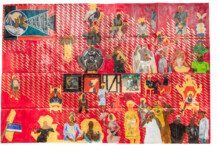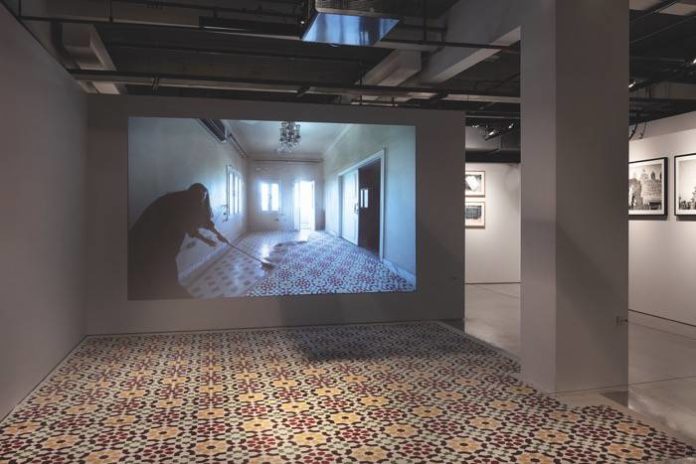
The diversity of themes, poetics and approaches of the 21st edition of Sesc_Videobrasil is one of its highlights. There are no redundancies or overlaps between the more than 60 works selected for the show, which for the first time in history has a definite lead even before the call. Imagined Communities a motto inspired by Benedict Anderson’s work, becomes a potent but nonimposing guide that has brought together a wide range of research whose main common feature may be the delicate manner in which they deal with often dramatic issues.
Destruction, threat of extermination, distorted view of the world due to racial, economic or social prejudice are largely dealt with by the 50 artists selected by the judging committee and the 5 invited by the curator. And yet, a certain subtlety predominates in the show, a bet on the transformative power of art, which does not have to scream to be heard. Some examples clearly demonstrate this defense of utopia in the face of contemporary tragedy. Working prominently in the exhibition, the series of urban landscape photos taken by England-based Syrian Hrair Sarkissian subtly and surprisingly deals with totalitarian repressions by showing places where public executions are often made in various countries where punishment of death is state policy.
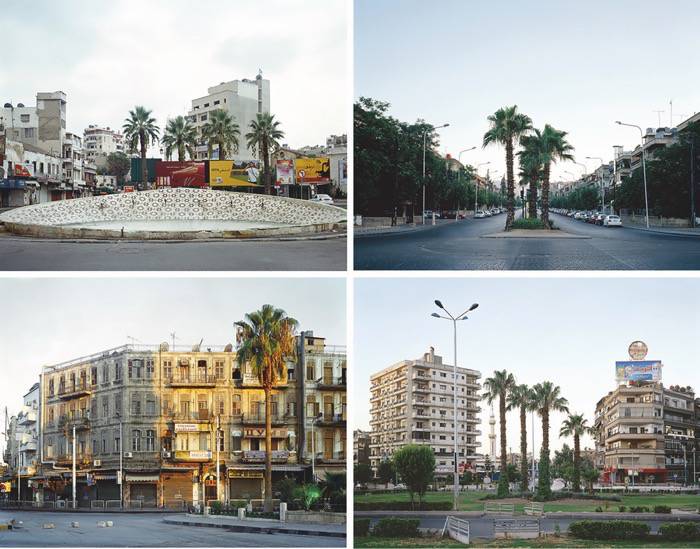
Peruvian Claudia Martínez Garay explores with a mix of subtlety and sharp aim the annihilation of indigenous ancestral culture and the effects of colonization on indigenous people. She appears in the exhibition with two works: the installation titled Somos aún! , made from the sum of a series of anthropomorphic sculptures, which mix traces of ancient cultures with a persistent defense of popular imagination, and a touching video, I Survived to you, in which close-up images are seen of the shapes of an ancient 7th-century vase of Moche civilization, famous for its pottery work, kept at the Ethnological Museum in Berlin. While getting lost in the twisting and mysterious forms of this archaeological object, the viewer hears a strange, somewhat surreal narrative, made in the first person by the vase, narrating from its making to its closure in a distant museum.

The ancient culture of its people is also the theme of Dana Awartani’s work. In a specular relationship between video and installation, the Arabian artist makes a critical comment about the abandonment of the millenary Hejazi architecture, typical of her region until the beginning of an overwhelming modernization process that began in the 1950s. Dana covers the floor of her installation with a beautifully patterned, typically Islamic tile carpet patiently made with colored sands. The ephemerality of the composition is even more evident in the video, which shows the artist sweeping the same formation in one of the few houses with such architecture still in Saudi Arabia.
Of course the presence of the video is striking in the show, but it is by no means hegemonic. Many works combine language with other forms of expression such as painting, photography and drawing, or simply incorporate typical video procedures into works that do without moving image, as can be seen in works such as those by Brazilian André Griffo, from the Malinese. Tiécoura N’Daou and Tunisian Nidal Chamekh, who travel freely through different media to develop a work of high political resistance. In other words, the event puts us in front of a series of works that speak, in the words of artistic director Solange Farkas, “different languages for very similar situations”.
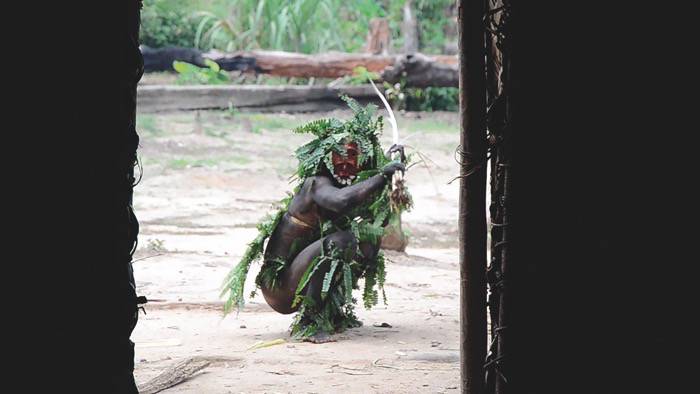
In terms of denunciation, the highlight of the show is the work related to the indigenous population, taking from the invisibility the drama of those populations increasingly threatened by violence and that have long been relegated to a position of invisibility. Collective groups such as the Alto Amazonas Audiovisual, which brings together indigenous anthropologists and filmmakers, sew and dialogue images captured in the region. There are also historical records such as interviews made by filmmaker Andrea Tonacci with indigenous leaders in the late 1970s that only now, in 2014, were recovered and restored. But there are still in the show, and in chorus, strong warning voices about the situation of communities and groups in search of survival and affective spaces of conviviality and struggle. This effort is epitomized by the incisive action led by Mexican Teresa Margolles, one of five artists specially invited to participate in the Biennale, which denounces the brutal violence against transsexuals. The work, entitled Priscilla Present honors the stabbed transvestite a year ago in downtown São Paulo and unfolds into three different elements: performance action, embroidery and video. Or in the paintings by No Martins, who associates powerful portraits of black figures to the phrase “It is enough!”
The internationalization of Sesc_VideobrasilWith 21 editions and 36 years of existence, Sesc_Videobrasil is one of the most powerful and long-lived cultural events in the country. In the current edition, which can be seen until February 2020, at Sesc 24 de Maio, the show has made some important changes in its structure. Among them are the incorporation of a theme not only for the selection of works, but already announced before the artists registered their projects (Imagined Communities was the guiding thread adopted for the current edition); the expansion of the curatorial team; and – perhaps the most impactful of changes – the transformation of the event into a Biennial. The term Biennial, incorporated into the title of the event that is now called the Sesc_Videobrasil Contemporary Art Biennial, is not just periodic information or a brand hit. Taking on itself as an event of its kind inserts the now biennial into a broad international agenda of contemporary art. It is a way of reaffirming itself as part of a broad and active circuit of cultural action. Brazil already has two other important Biennials, São Paulo and Mercosur, but the field of Videobrasil is well defined: it acts clearly against the hegemonic nuclei, bringing together artists and thinkers from Africa, America, the Middle East and Brazil. Caribbean “This is the place we have to research, we have to investigate,” says Solange Farkas, founder and current artistic director of the project. 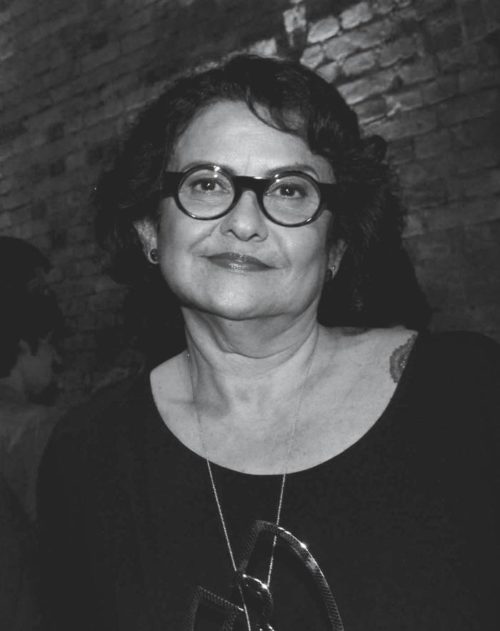 She makes a point of stressing the importance of keeping the event always ready for adaptations. Sesc_Videobrasil has already resembled a movie show, has taken on the identity of a major festival and is now completing an important step in this slow process of moving from the black box of the movie theater to the “white cube” of the exhibition space. “The first decade was to understand video production in Brazil”, explains Solange. In the 1990s, there is a certain disappointment, a frustration of the hope that video would occupy a more significant place in the cultural scene. “We went from romanticism to pragmatism, and in the face of the realization that we were not going to occupy TV, people began to investigate and experiment more intensely with the specifics of language”. In the wake of this process, there was an important process of internationalization, first gathering and showing in Brazil the best of the international scene and the historical basis of video art and, subsequently, making room for a young, intense, hard-to-reach production from the south. geopolitical “There was a lack of knowledge, a great ignorance about the history of the video here”, says. The result of this mapping can be measured in the archive of almost three thousand works gathered in the Videobrasil Association’s collection, available for consultation. “It is a broad material that allows us to understand this place of critical invisibility”, she adds. According to her, the strategy of assuming itself as a specialized biennial has been drawing for three editions, when it brought Olafur Eliasson’s work to Brazil. Among the challenges facing the new model of the event, Solange cites the increase of international and local dialogues, adding groups and issues traditionally relegated to the margins. “It’s no use getting self-conscious”, she concludes. |






